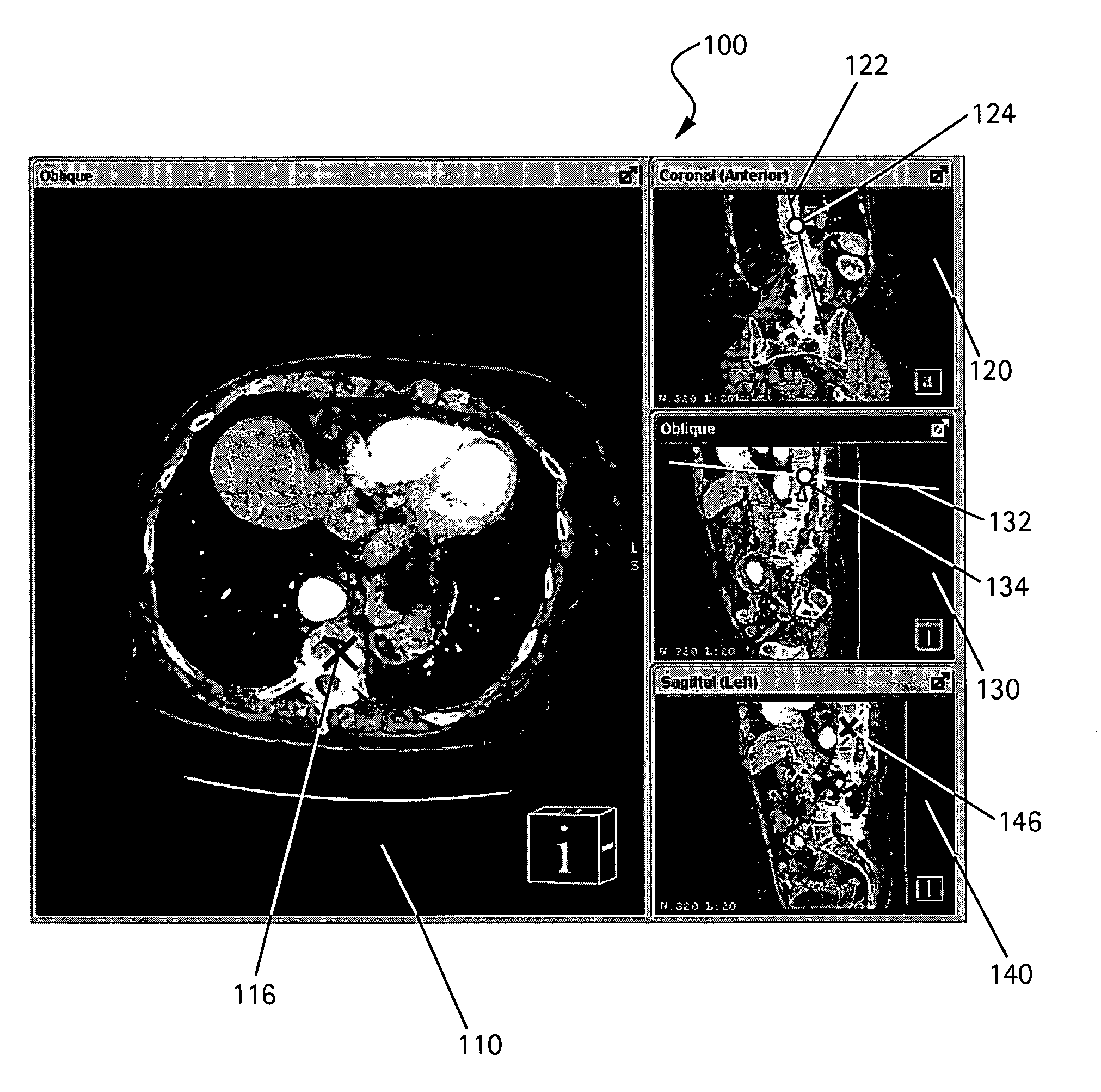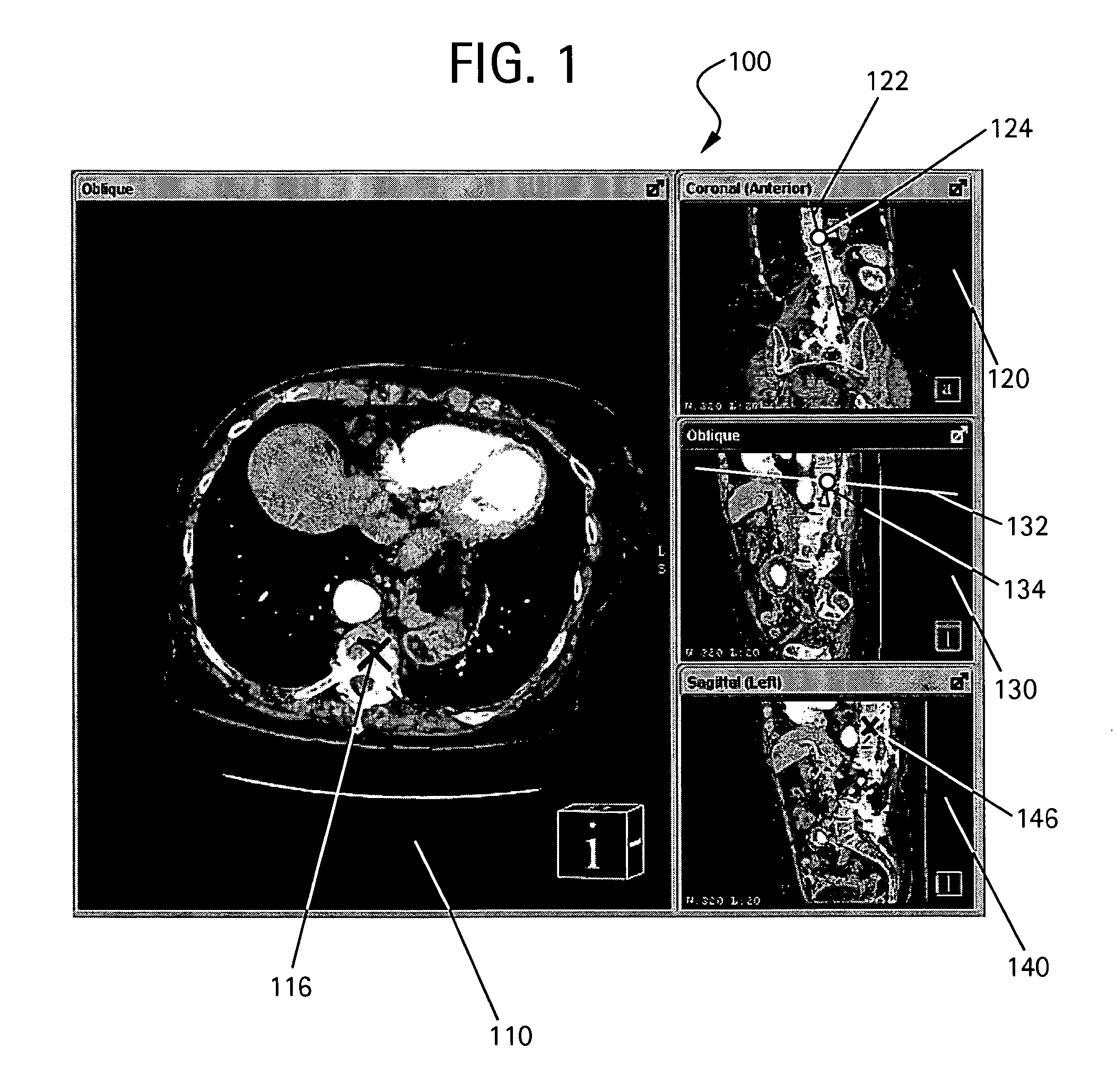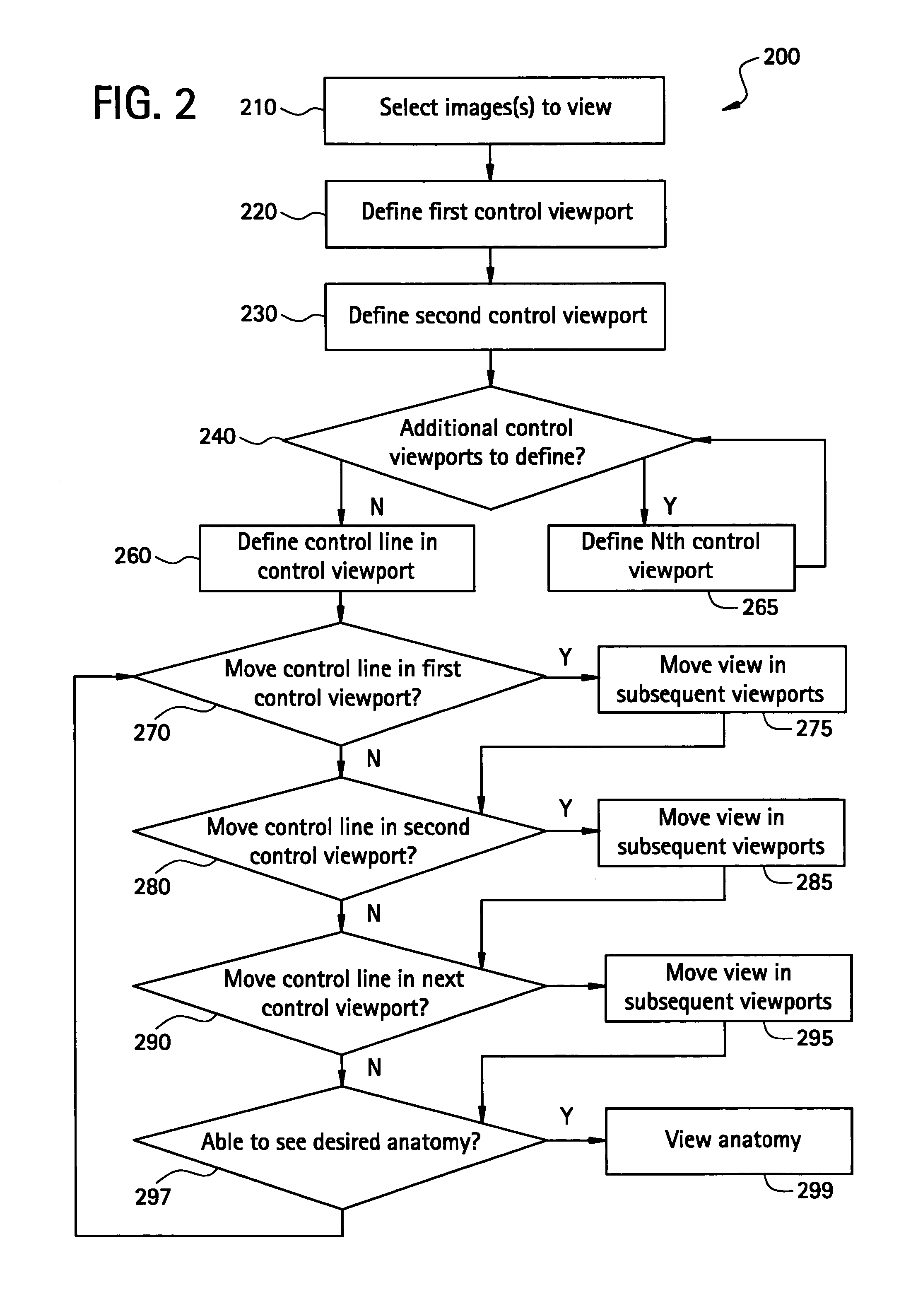Method to define the 3D oblique cross-section of anatomy at a specific angle and be able to easily modify multiple angles of display simultaneously
a technology of defining a specific angle and defining a three-dimensional oblique cross-section, which is applied in the field of viewing medical images at several angles, can solve the problems of preventing the display of users are unable to move multiple control lines in multiple 2d images, and cannot witness multiple steps of the double oblique process simultaneously, so as to facilitate the modification facilitate the effect of multiple angles of display
- Summary
- Abstract
- Description
- Claims
- Application Information
AI Technical Summary
Benefits of technology
Problems solved by technology
Method used
Image
Examples
Embodiment Construction
[0024]FIG. 5 illustrates a system 600 for simultaneously modifying one or more angles of display or angles of cross-section in one or more cross-sectional images or cross-sectional stack of images of a 3D volume according to an embodiment of the present invention. System 600 includes a computing device 610 and a computer-readable storage medium 620. Computing device 610 may include any one or more interconnected machines capable of carrying out operations based on one or more set of instructions. While a personal computer is shown as device 610 in FIG. 5, the various embodiments of the present invention are not limited to a personal computer. Any one or more interconnected machines capable of carrying out operations based on one or more set of instructions may comprise device 610. A set of instructions may include, for example, a software application or program, for example. Medium 620 may include any computer-readable storage medium, such as a local and / or remote memory. For exampl...
PUM
 Login to View More
Login to View More Abstract
Description
Claims
Application Information
 Login to View More
Login to View More - R&D
- Intellectual Property
- Life Sciences
- Materials
- Tech Scout
- Unparalleled Data Quality
- Higher Quality Content
- 60% Fewer Hallucinations
Browse by: Latest US Patents, China's latest patents, Technical Efficacy Thesaurus, Application Domain, Technology Topic, Popular Technical Reports.
© 2025 PatSnap. All rights reserved.Legal|Privacy policy|Modern Slavery Act Transparency Statement|Sitemap|About US| Contact US: help@patsnap.com



